Dear Friends,
On 15 August 1937, Lawrence Marshal Pinto (24 April 1907—7 December 2001) and his newly married wife Ethel Anne alias Mona had their first Darshan of Sri Aurobindo at Pondicherry. The impact of the Darshan was such that Lawrence Pinto, who was then in his thirtieth year, decided to join Sri Aurobindo Ashram as an inmate. His wife Mona too followed him and joined the Ashram with their only daughter Gauri who was born in November 1937. Sometime later they were joined by Millie Pinto, Lawrence’s younger sister.
The Pintos have played an extremely pivotal role in shaping the present Sri Aurobindo Ashram. Lawrence, whom Sri Aurobindo had renamed Udar in April 1938, set up the Harpagon Workshop where the furniture of Golconde was prepared under his supervision. He also established the Smithy, Foundry, Carpentry, Fitter Shop, Machine Shop and Stone Polishing Section which were needed for the construction and maintenance of Golconde. Later, when the Playground and Sportsground were started, Harpagon also manufactured various sports equipments. When a centralized Purchasing Department was started in the Ashram, Udar was put in charge of it. To him, the Mother had given the opportunity to design and make the furniture in Sri Aurobindo’s room. Under the Mother’s direction he started several other departments like the Handmade Paper Unit, Precast Concrete Works and the Laboratories Senteurs. He also developed the Coco Garden Cement Concrete Works and managed Honesty Engineers and Contractors. He played a significant role in setting up of the New Horizon Sugar Mills and the New Horizon Stainless Steel factory. On 7 December 1971, the Mother appointed him as one of Her secretaries.
Ethel Anne Lovegrove better known as Mona (11 November 1911—21 May 2004) came to Pondicherry in January 1937 and married Udar in the following month. She was chosen by the Mother to be the overall in-charge of Golconde, a responsibility she executed most efficiently till the last days of her life.
Millie Pinto (8 June 1917—3 July 1982) was an extremely industrious worker. Known as the one who started the transport service in Sri Aurobindo Ashram, she has been described as ‘service embodied.’ Her mother died when she was only a few months old. Her father married his wife’s sister and they told her that a Guardian Angel always protected her. When she came to Pondicherry and saw the Mother, she recognized her as the one who protected her and whom she saw in her dreams.
Three tributes to Udar, Mona and Millie Pinto—penned by Kaivalya Smart, Aniruddha Sircar and M. P. Pandit respectively—have been published in the online forum of Overman Foundation along with some of their photographs with the view of recalling their stupendous contribution towards the development of Sri Aurobindo Ashram. In his tribute to Millie, M. P. Pandit has spelled her name as ‘Milly’ so we chose to keep it as it is.
With warm regards,
Anurag Banerjee
Founder,
Overman Foundation.
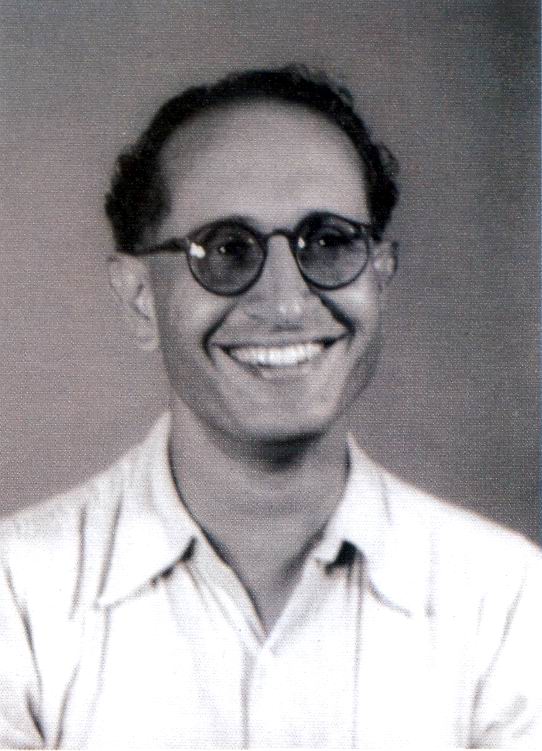
Udar Pinto
(24 April 1907-7 December 2001)
On 7th December 2001, in the early morning a rare jewel from the treasure of the Mother left us for the higher journey in the subtle world. Now his physical form is no longer visible amongst us.
A young aeronautical engineer, Lawrence M. Pinto, who joined Sri Aurobindo Ashram in the thirties, had since then given his unparalleled contribution in the growth of the Ashram, till his last breath.
On his 31st birthday, on 26th April 1938, Sri Aurobindo gave him the name “Udar” and wrote its significance—“Noble, generous, upright and sincere.” Udar upheld all the four virtues in himself and proved himself true to his name.
The Mother had given him the work of sounding the gong, three and four times, respectively, at the time of the commencement and the completion of the morning meditation around the Samadhi, on every Darshan Day. He did this work most punctually and unfailingly almost till the end of his life. To sound the gong for the Mother is not a small or an easy task. It is only to someone who is the most fortunate and rare that the Mother herself would entrust this work.
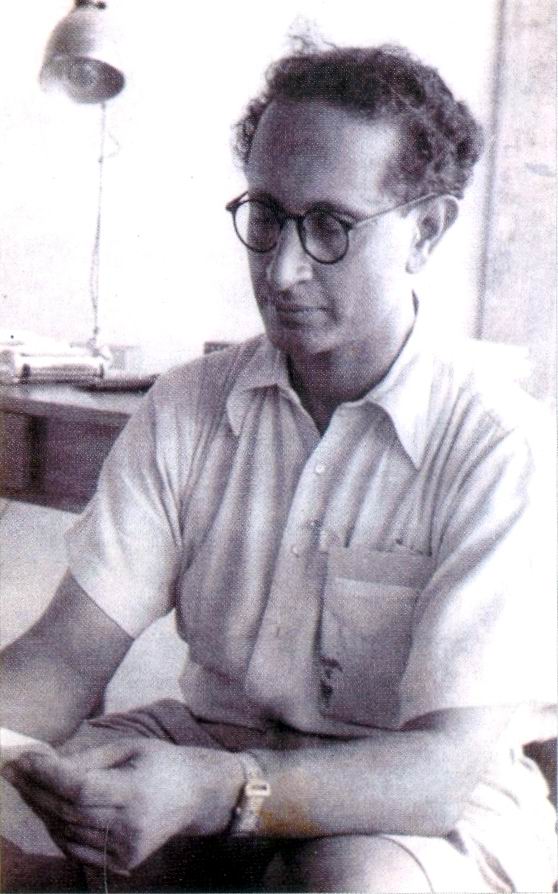
There is hardly a single department in the Ashram which began without Udar contributing a lion’s share in it. Whether it was to make new furniture for Sri Aurobindo’s rooms or else to construct a new apartment for the Mother—that work would be entrusted only to Udar. He had the rare privilege of going to Cuddalore with the Mother for purchasing the logs of teak wood to be used for furniture in Sri Aurobindo’s rooms. Whether it was to materialise the Mother’s dream of Golconde or start the Harpagon Workshop or the precast Concrete Factory or the Perfumery or the Handmade Paper Unit or the Stainless Steel Factory or even the business firm of Honesty Engineer & Contractors, in starting, giving shape and stabilising all these departments—we find everywhere the invaluable contribution of Udar.
When the Mother began to give much attention to physical education in the Ashram, it was Udar who manufactured the table tennis tables, the dumb-bells, barbells and other apparatus for body-building, weight lifting and gymnastics, the discus, javelin, shots, hammer and even the spiked running shoes required for athletics—all in the all-purpose Harpagon Workshop! Even the running tracks and the Swimming Pool in the Sportsground were constructed under his direct supervision. During the athletics season in the early fifties, the entire organizational work was carried out in his office in Harpagon. It was a most familiar sight in the athletics season to see Udar in the Sportsground, always hovering near the Mother, maintaining a meticulous record of the performance of each participant (and there used to be some six hundred of them!)—and this after his eight-hour stint of supervising the work in each and every department under his care.
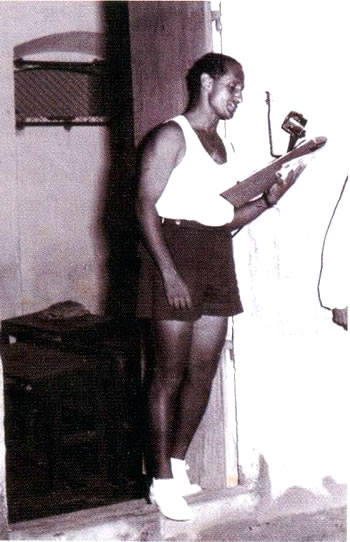
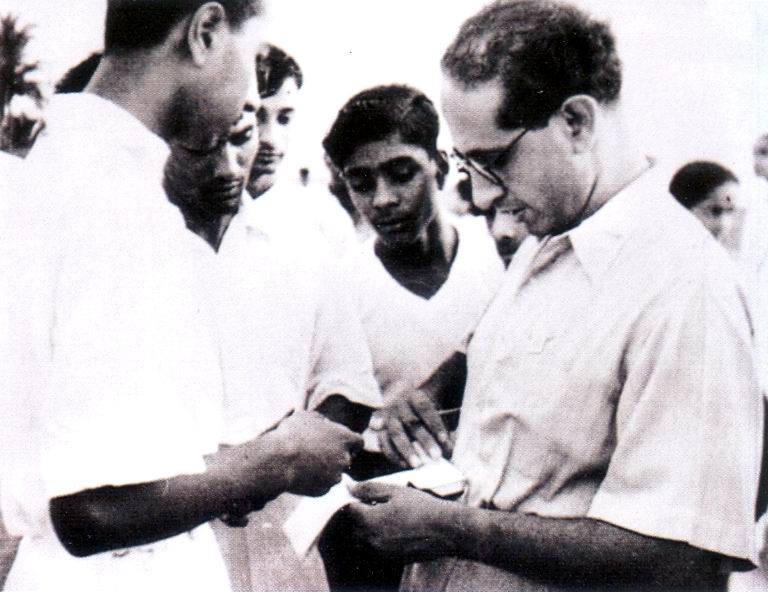
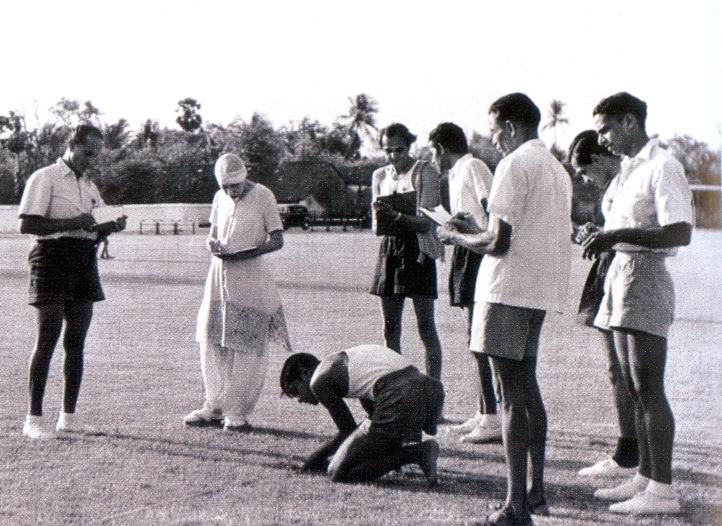
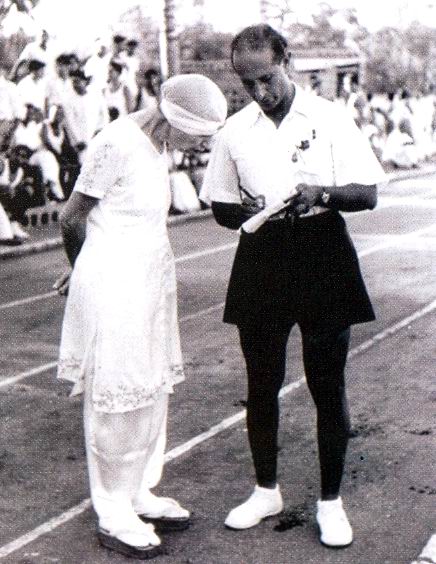
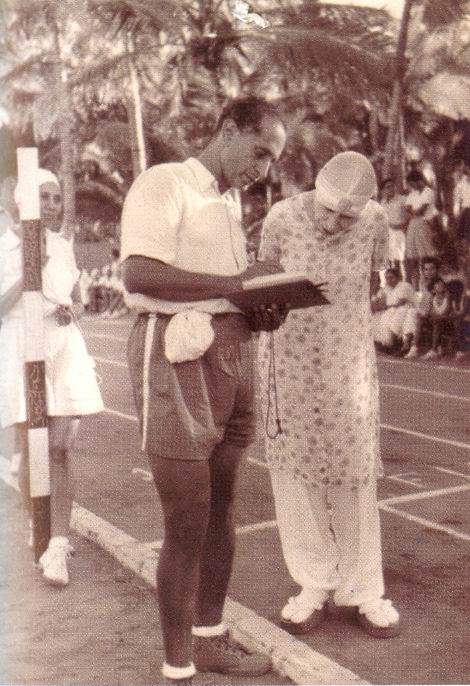
At the time of the grand function of the laying of the foundation stone of Auroville, the Mother herself made Udar the main announcer. Also, the Mother had selected Udar as her representative for going to Delhi to do the work of hand-delivering her special blessings, in response to the request from the would-be President of India.
One of the most luminous sides of Udar’s personality was his love for Savitri. Udar used to go to Sri Aurobindo’s Room to do the work entrusted to him, namely to clean the furniture, at the time when Sri Aurobindo would be dictating Savitri to Nirodbaran. He had heard portions of Savitri spoken in Sri Aurobindo’s voice. It was a divine experience, as he often told us, and it was at this time that the seed was sown which in later years burgeoned as his passion for Savitri. One astonishingly brilliant achievement of Udar was that he had memorized long passages from the epic poem Savitri. To see him and to listen to him recite Savitri was a spiritual feast.
Udar was one of those very few persons, who can be counted on the fingertips, who were present at the time of the last breath of Sri Aurobindo. The responsibility of the momentous task of laying in the Samadhi the material body of Sri Aurobindo was also entrusted to Udar under the direct and detailed instructions of the Mother. Again, after the Mahanirvan of the Mother, following her specific instructions, Udar accomplished the work of laying her physical frame in the Samadhi.
In 1970 Udar founded Sri Aurobindo’s Action under the permanent presidentship of the Mother and assumed the work responsibility as its secretary. From that very same year a monthly named Sri Aurobindo’s Action was launched. Under the auspices of this institution he organized All India Youth Camps at Pondicherry in Sri Aurobindo’s Birth Centenary Year.
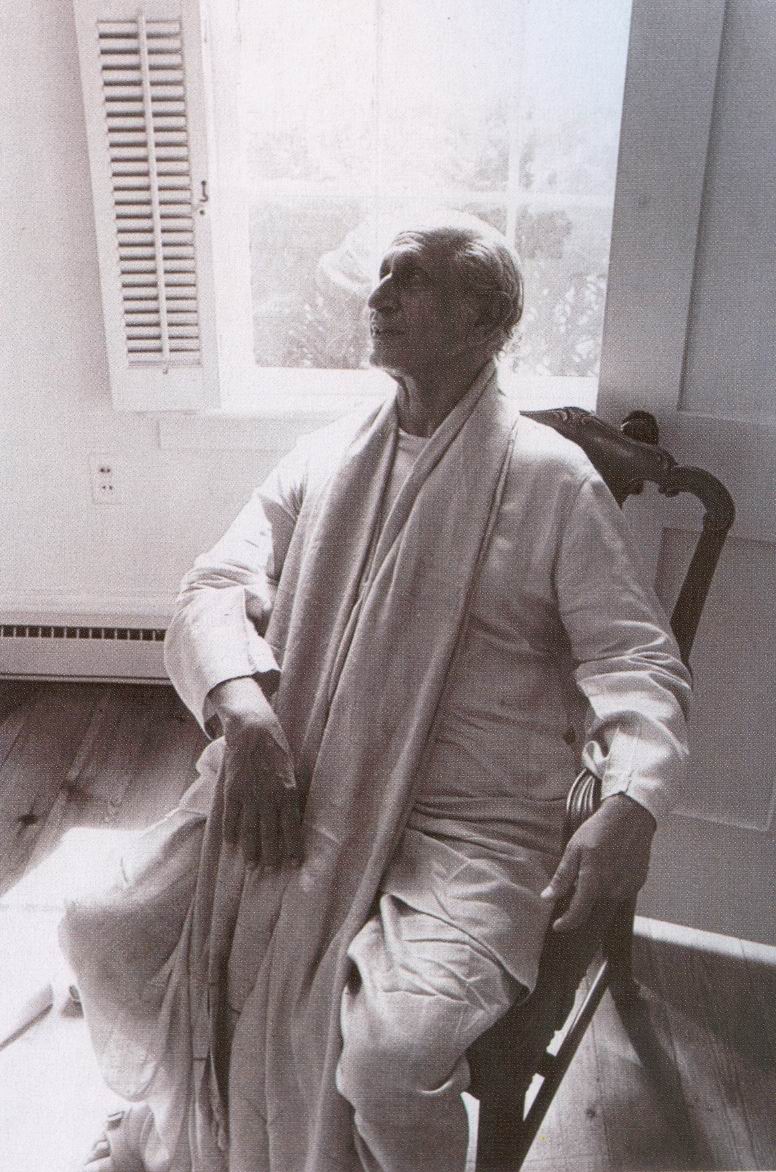
Once the Mother casually remarked that in her childhood in France, she had heard that India was the land of storytellers. Then she told Udar, with a twinkle in her eye: “It is only when you began to tell me your stories that I knew how Indians got that reputation.”
Every afternoon, at tea-time, those who stayed at Golconde would sit by Udar’s side and listen to his stories on various topics. To listen to his Savitri recitation, initially at his office and afterward at his home, and thereafter to sit by his side and listen to his reminiscences of the olden days was also an uncommon privilege.
On the occasion of Sri Aurobindo’s Birth Centenary, as part of the programme of the Government of India, Udar was selected along with one other person for the work of going to the West and giving talks on Sri Aurobindo and his Yoga. During that trip Udar used to wear a silk dhoti, kurta and silk scarf. That looked very elegant and impressive and had a special impact on the audience. As a result, some people started calling him “Swamiji”. Udar immediately and firmly put a stop to this mode of addressing him. After his return to the Ashram, the conversation he had with the Mother in this regard was as follows:
The Mother: They called you Swamiji?
Udar: Yes, Mother, but I soon stopped it.
The Mother: I am glad you stopped it; because if ever you fall into that trap, wherever you are, I shall come and break your head.
Udar: Mother, please, dear Mother, I don’t want to fall into any trap. I have no intention of being any “Swamiji”. For me you are the only one.
The Mother: Yes, I know, and that is why I am telling you all this. Udar, those who take our Force, Sri Aurobindo’s and mine, and try to build up their own image with it, they are traitors to our work.
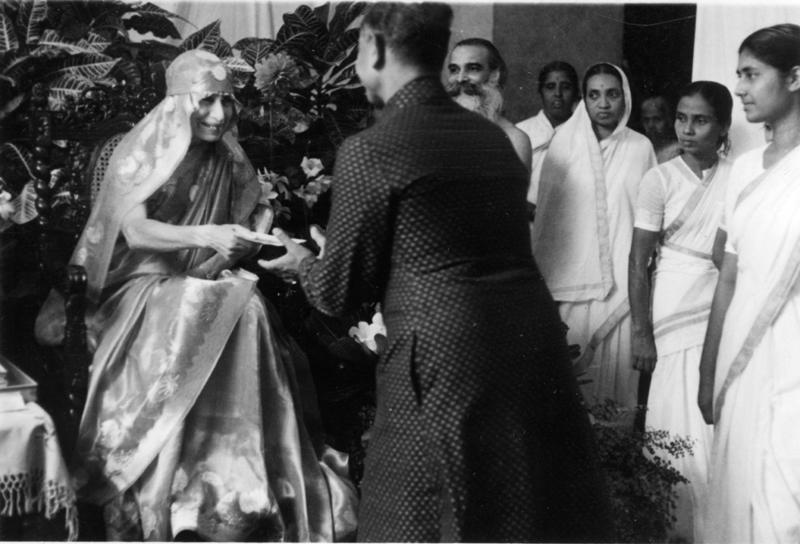
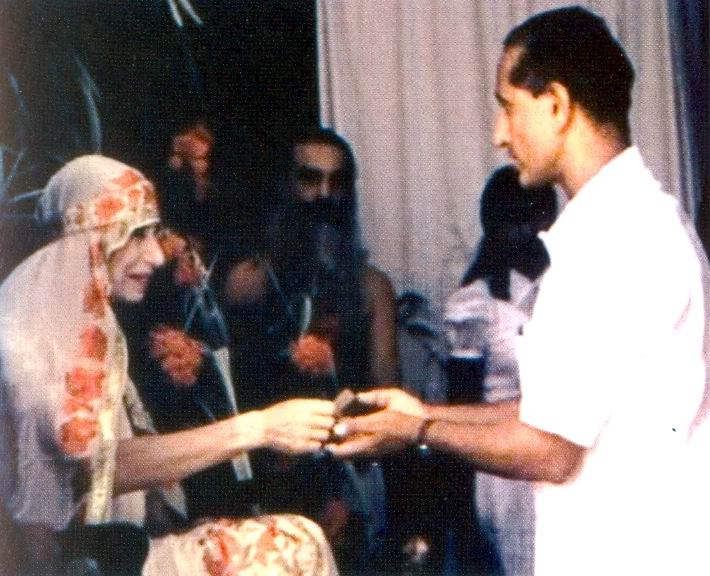
He had, according to the highest tradition of those sadhaks of the Ashram who were very close to Sri Aurobindo and the Mother, completely effaced his individual ambitions and, having remained far away from publicity in this world, had fully illumined his life in the light of Purna Yoga. Udar is not now amongst us in his physical body. But his life will inspire us always.
Kaivalya Smart
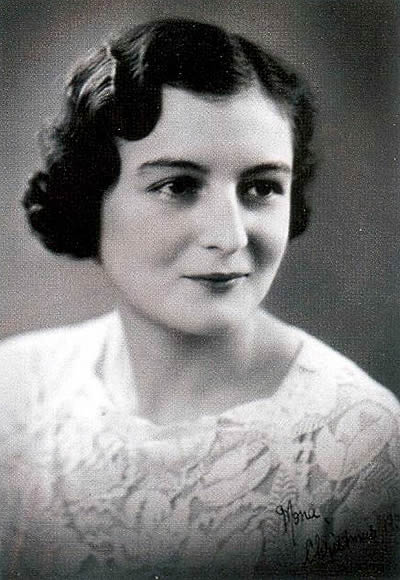
Mona Pinto
(11 November 1911—21 May 2004)
The birthday card that the Mother gave Mona on 11.11.60 says:
To Mona, my dear and faithful collaborator
Bonne Fête!
With love and blessings for ever.
Mona Pinto, née Ethel Anne Lovegrove, passed away in the Ashram Nursing Home on May 21, 2004 at 10.37 a.m. at the age of ninety-two. Amal Kiran, who had known Mona for more than sixty-seven years, was at first very sorry to hear the news. But when he was told that Mona wanted to leave, he said, “Whatever happens under the Divine’s eyes is always for the best.”
Ethel, also known as Mona to her friends, was born on November 11, 1911 in London, the eldest of six siblings. She fell in love with Udar (then Laurence M. Pinto) who was studying aeronautical engineering in London. At the age of twenty-five she boarded a ship and all alone came to India where she knew absolutely nobody except Udar who had returned to India three years earlier to get a job and make enough money to support his bride-to-be. Her photographs of that period show what a stunning beauty she was. They were married in Pondicherry in the big church in Dumas Street on February 6, 1937. Soon the newly married, handsome couple became very friendly with many young disciples then living in the Ashram, namely, Amal Kiran, Dilip Kumar Roy, Purani and Ambu, all of whom marvelled at the deep love and courage of this young lady who had actually done what Robert Burns had said in his poem:
“And I will come again, my Luve
Tho’ it were ten thousand mile.”
Sri Aurobindo and the Mother too came to know about this newly married couple and took interest in them. A few months before Gauri was born, the Mother advised Mona to go to Bangalore for the delivery because in those days Pondicherry did not have proper medical facilities.
Udar and Mona had their first Darshan of the Mother and Sri Aurobindo in August 1937. At once a change came over Udar and he decided to dedicate himself to the service of the Mother and Sri Aurobindo as soon as it was feasible. He gradually wound up his business and became more and more involved in the Ashram activities. Like any dutiful Indian wife, Mona followed him and joined the Ashram with their baby daughter. When Sri Aurobindo gave Laurence his new name, Udar, the Master was asked for a name also for Mona. Sri Aurobindo said that he liked that name, as it reminded him of Mona Lisa. Since then she has always been known only as Mona in the Ashram.
Meanwhile the Golconde Dormitory was being built. With the Mother’s blessings Udar started the Harpagon Workshop in order to prepare all the furniture and the fittings. On her side, the Mother asked Mona and some other ladies of the Ashram to start making all the bed linen which would be required once the Dormitory started functioning. Everything had to be hand-stitched!
As soon as the highly renowned Golconde Dormitory was ready, unique as an architectural marvel of its kind, the Mother appointed Mona as the overall-in-charge of Golconde. The utmost diligence, dedication and courage with which she carried out her onerous duties till almost the last days of her life, have become legendary. Where the proper maintenance, reputation and well-being of Golconde was concerned Mona would admit no compromise. A single anecdote will suffice to illustrate this point.
Once, a very well-known doctor, a friend of D. who was a very close disciple of Sri Aurobindo, was permitted to stay in Golconde. Due to the doctor’s carelessness a beautiful piece of furniture was scratched. When Mona took him to task for not abiding by the Golconde regulations, the doctor was annoyed and reported the matter to his friend D. who, in his turn, wrote to Sri Aurobindo, complaining about some of “the meaningless rules” of Golconde. Sri Aurobindo’s reply dated February 25, 1945 is not only a wonderful piece of literature, it is pregnant with a seer’s vision of a Truth at the highest level and an object lesson in the care and handling of material things. A portion of this letter is quoted below:
‘As regards Golconde and its rules—they are not imposed elsewhere—there is a reason for them and they are not imposed for nothing. In Golconde Mother has worked out her own idea through Raymond, Sammer and others. First, Mother believes in beauty as a part of spirituality and divine living; secondly, she believes that physical things have the Divine Consciousness underlying them as much as living things; and thirdly that they have an individuality of their own and ought to be properly treated, used in the right way, not misused or improperly handled or hurt or neglected so that they perish soon or lose their full beauty or value; she feels the consciousness in them and is so much in sympathy with them that what in other hands may be spoilt or wasted in a short time last with her for years or decades. It is on this basis that she planned the Golconde. First, she wanted a high architectural beauty, and in this she succeeded — architects and people with architectural knowledge have admired it with enthusiasm as a remarkable achievement; one spoke of it as the finest building of its kind he had seen, with no equal in all Europe or America; and a French architect, pupil of a great master, said it executed superbly the idea which his master had been seeking for but failed to realise; but also she wanted all the objects in it, the rooms, the fittings, the furniture to be individually artistic and to form a harmonious whole. This too was done with great care. Moreover, each thing was arranged to have its own use, for each thing there was a place, and there should be no mixing up, or confused and wrong use. But all this had to be kept up and carried out in practice; for it was easy for people living there to create a complete confusion and misuse and to bring everything to disorder and ruination in a short time. That was why the rules were made and for no other purpose. The Mother hoped that if right people were accommodated there or others trained to a less rough and ready living than is common, her idea could be preserved and the wasting of all the labour and expenses avoided.
“Unfortunately, the crisis of accommodation came and we were forced to house people in Golconde who could not be accommodated elsewhere and a careful choice could not be made. So, often there was damage and misuse and the Mother had to spend some time 200/300 Rupees after Darshan to repair things and restore what had been realised. Mona has taken the responsibility of the house and of keeping things right as much as possible. That was why she interfered in the hand-bag affair—it was as much a tragedy for the table as for the doctor, for it got scratched and spoiled by the hand-bag—and tried to keep both the bag and shaving utensils in the places that had been assigned for them. If I had been in the doctor’s place, I would have been grateful to her for her care and solicitude instead of being upset by what ought to have been for him trifles, although, because of her responsibility, they had for her their importance. Anyhow, this is the rationale for the rules and they do not seem to me to be meaningless regulation and discipline.”
From the above incident lest the readers should get a wrong image of Mona as nothing but the “Stern Daughter of the Voice of God”, let me hasten to add that she had a “benignant grace” too. She regarded everybody who ever lived in the Golconde as a member of her own family. She was full of solicitude for their health and comfort and gave every guest her personal attention and loving care. Naturally enough, the guests too reciprocated by showering their love and affection on her.
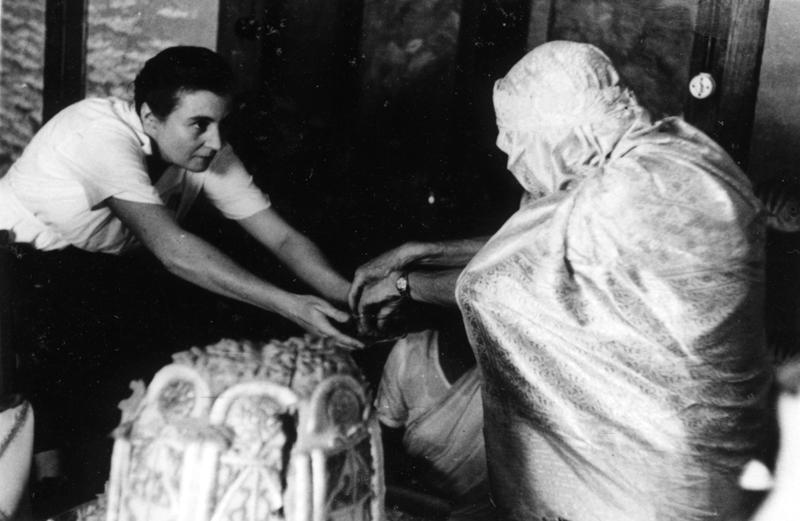
Mona always had a soft corner in her heart for the domestic servants. She was like a mother to them, always coming to their aid in their hour of need—from giving them free medicine to substantial monetary help.
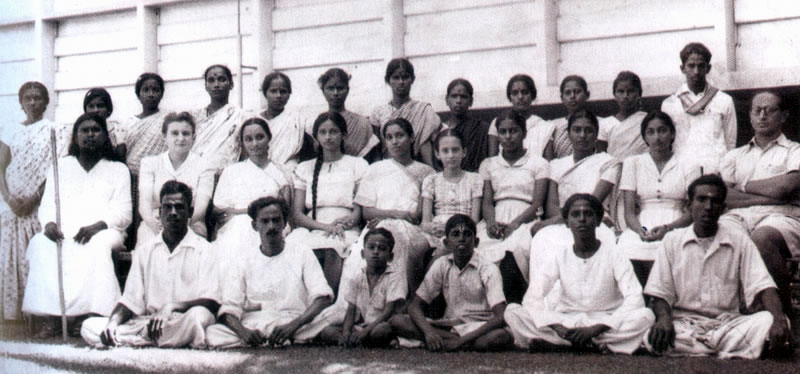
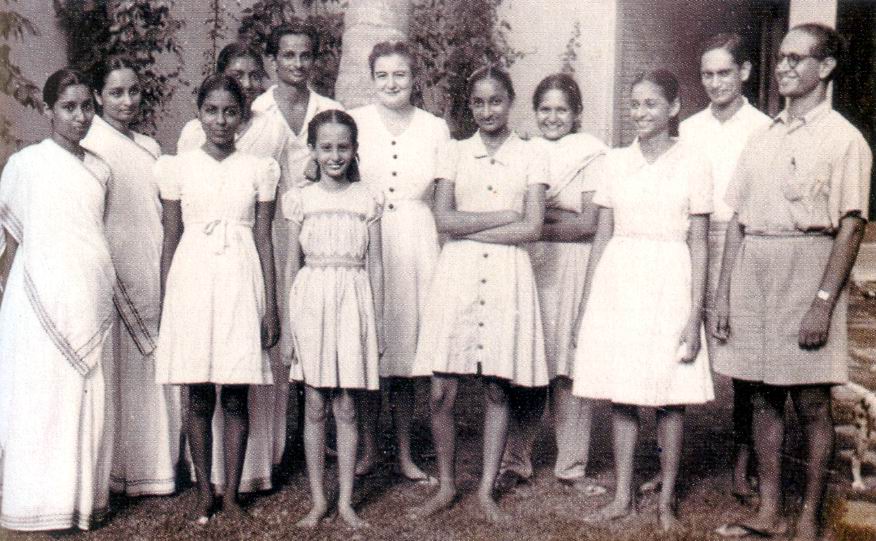
Mona had trained a group of girls, namely, Maniben of the present Marbling Department, Kusumben of Senteur, Kusumben of the Press Bindery and some others, in the art of doing things meticulously. Not only did they keep the Golconde always spick and span, but whenever the Mother needed any special cleaning work done, she invariably entrusted the job to Mona and her team. After Sri Aurobindo left his body, the Mother told Mona to give his room a thorough spring cleaning. The mattress on Sri Aurobindo’s bed, where much of Sri Aurobindo’s body liquid had soaked in, was sent to the Golconde for a special washing. When Mona went to clean the mattress, she could smell an ethereal perfume. Without disturbing the mattress, she immediately informed the Mother that a fragrance of fresh lotuses was emanating from it. The Mother told her to bring the mattress back exactly as it was and place it on Sri Aurobindo’s bed.
From 1944 when the Mother decided to celebrate Christmas as the Festival of Light, She gave Mona the responsibility of arranging the Christmas Tree and conducting the gift distribution every year. So long as the Mother went to the Theatre, She used to take the beautifully packed gifts from Mona’s hands and herself distribute them to everybody. In the Ashram, just as one could not think of the Golconde without Mona, so too had Christmas and Mona become synonymous.
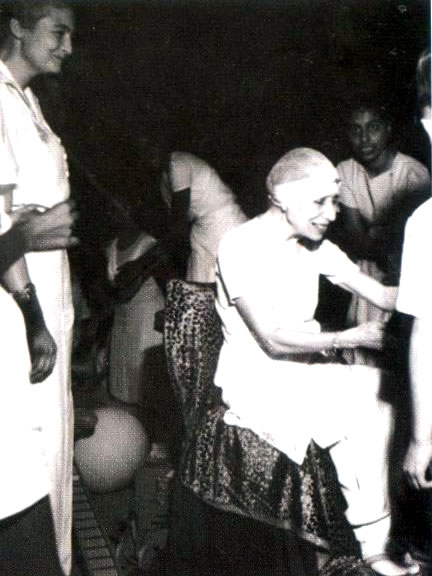
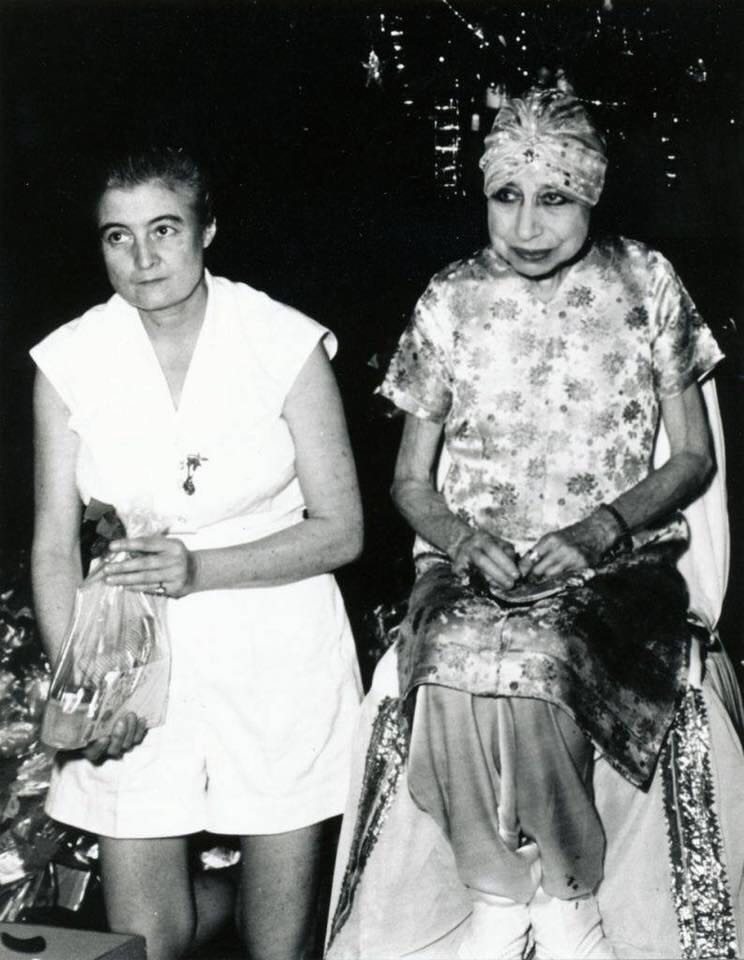
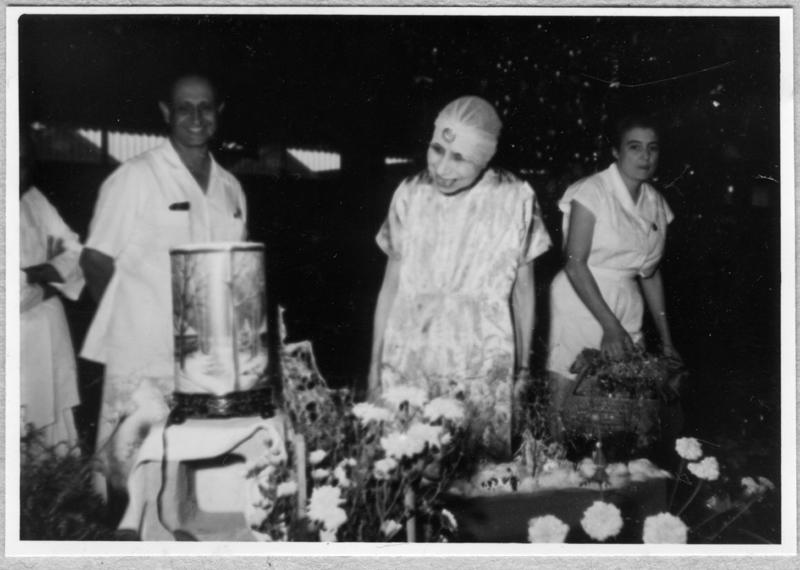
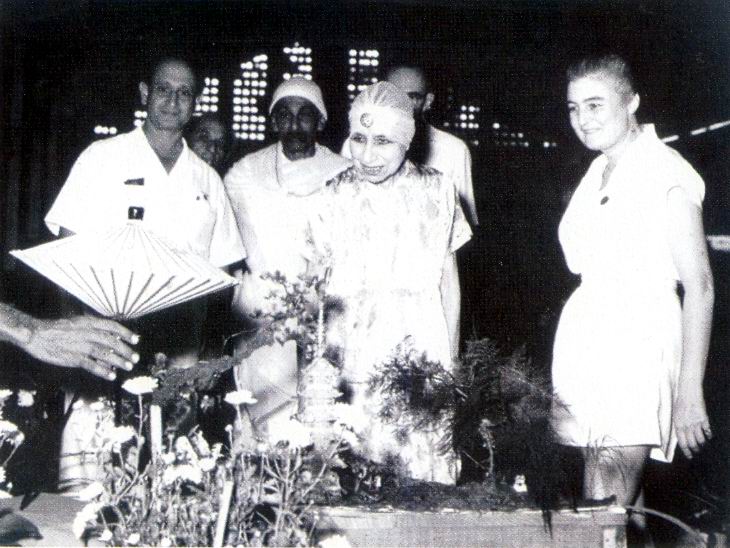
About the significance of Mona’s birthday the Mother once said, “Mona’s birthday is on the eleventh. She was born on the eleventh day of the eleventh month of 1911. Eleven—that is the number of progress… She is someone who truly loves to do things well, and wants to do them well and whatever she does, she does lovingly and very well.”
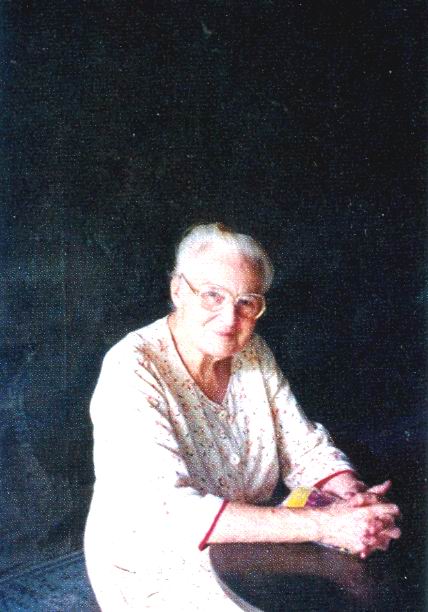
What the Mother thought of Mona’s dedicated service is reflected in one of the many birthday cards that the Mother had written to her:
11.11.63
Bonne Fête!
To Mona
Here is one more occasion to tell you physically what I told you so often when we meet in the night. How much I appreciate the quality of your work and how much I rely on your faithful steadiness. We are very close inside although we meet rarely outside, but my love and blessings are always with you.
Aniruddha Sircar
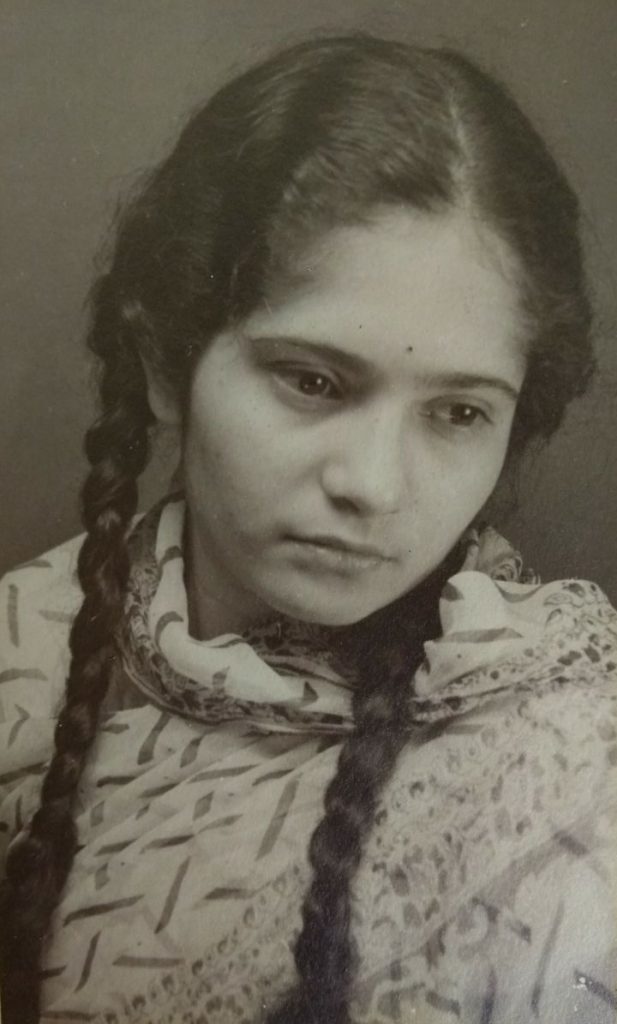
Milly Pinto
(8 June 1917—3 July 1982)
Milly, who suddenly passed away in the Ashram on the night of July 3, was a personal friend of mine, so that the loss for me was more than for just a member of a collectivity.
We were both at college together. That was over 45 years ago. I still seem to remember her schoolgirl uniform: blue skirt and white blouse. She used to commute daily from a distance of twelve miles. Later it was a welcome surprise for me to see her here in the early forties. The second World War was still on. She brought the first jeep to the Ashram and it was she who started the transport service, lending a helping hand to visitors to the Ashram arriving at the railway station. At that time there were no bus services and the railway was the only means of convenient communication between French India and British. She was always ready at hand to load the baggage, to unload it—all with a benevolent smile.
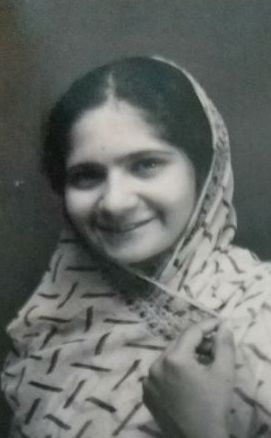
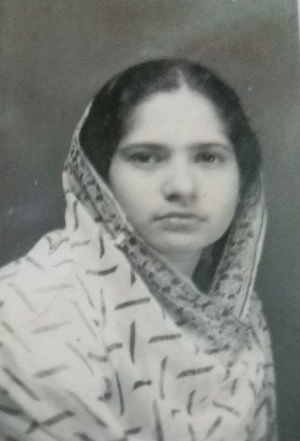
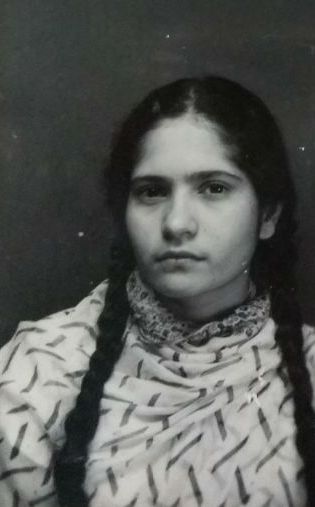
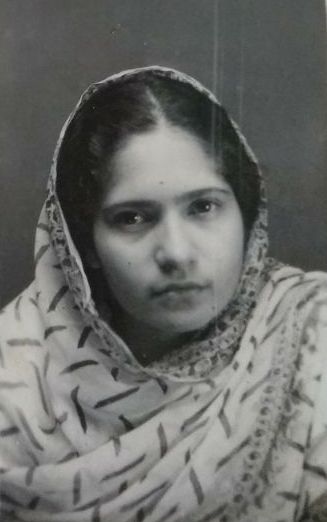
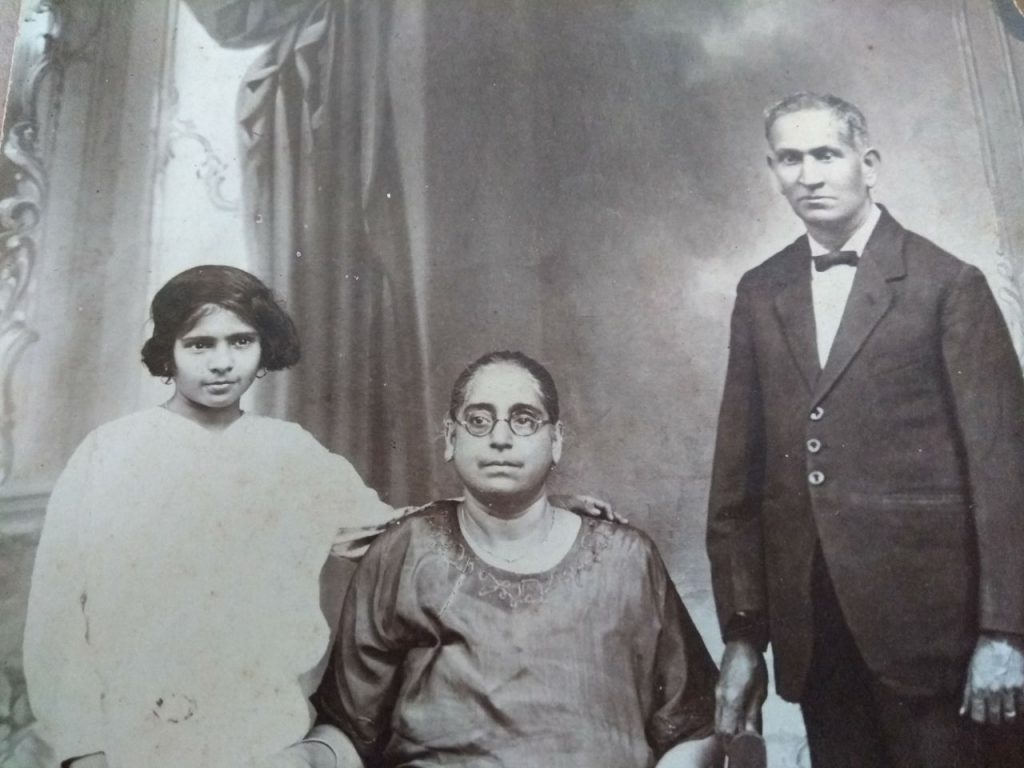
Millie with her aunt and father.
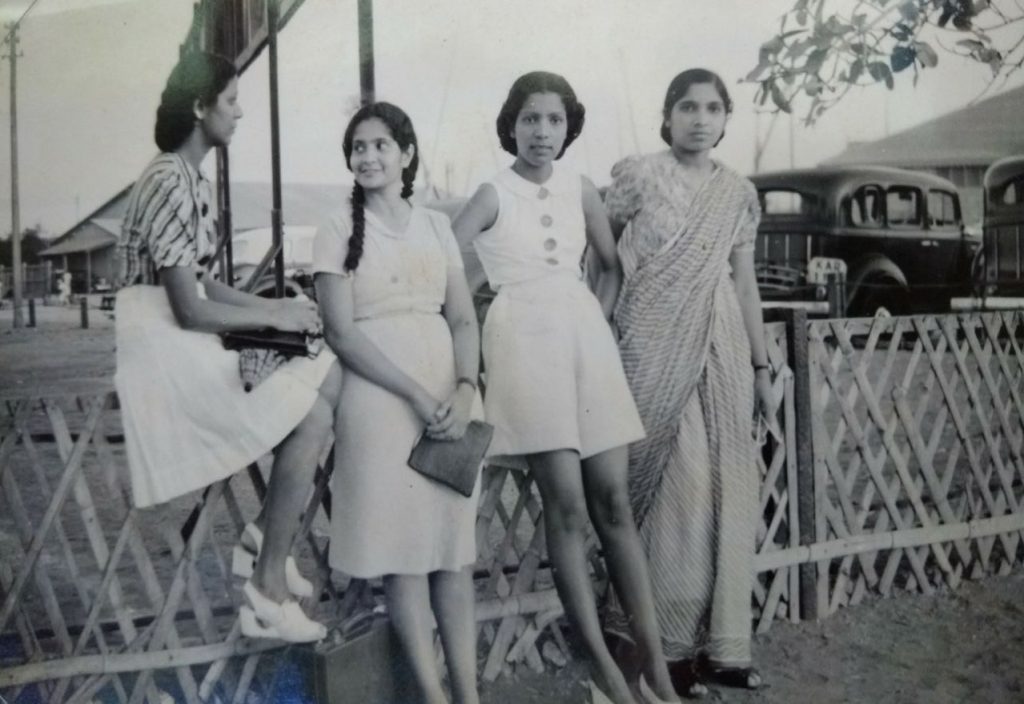
Millie with her friends.
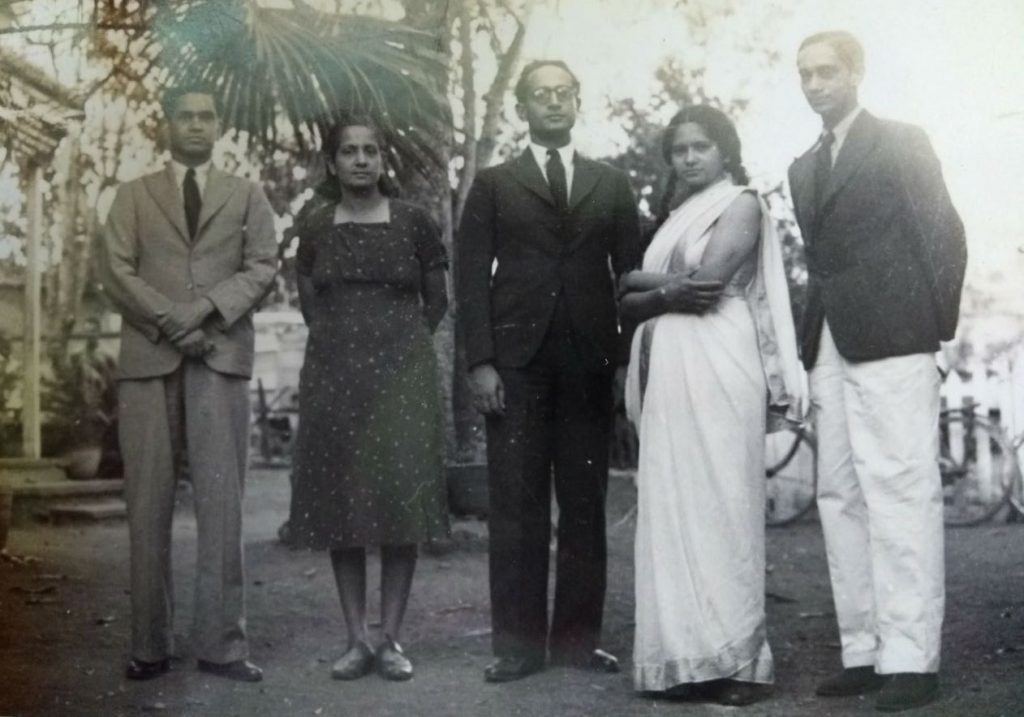
Millie with her siblings: Joe, Amy, Udar and Wilfy.
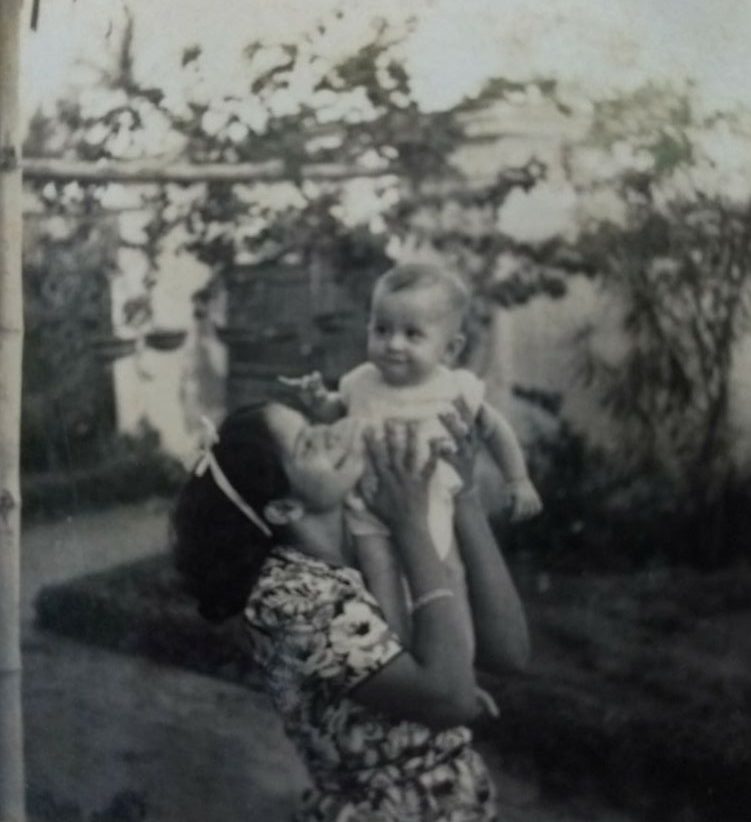
Millie with her niece, Gauri.
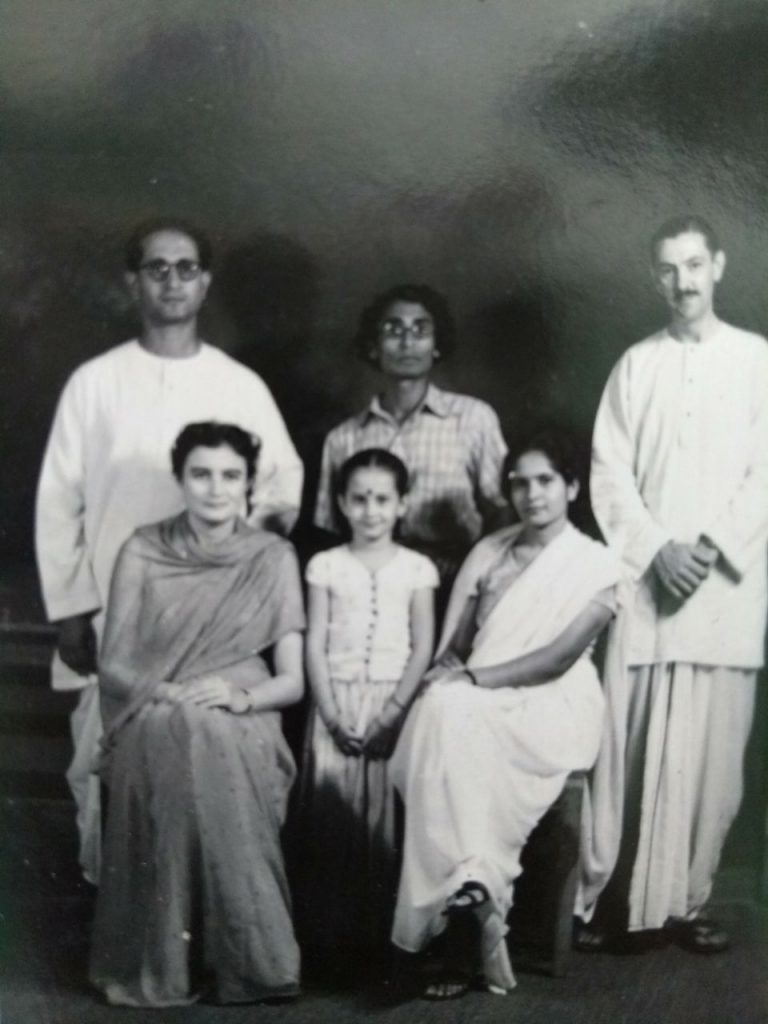
Millie with Udar, Mona, Gauri and Ambu.
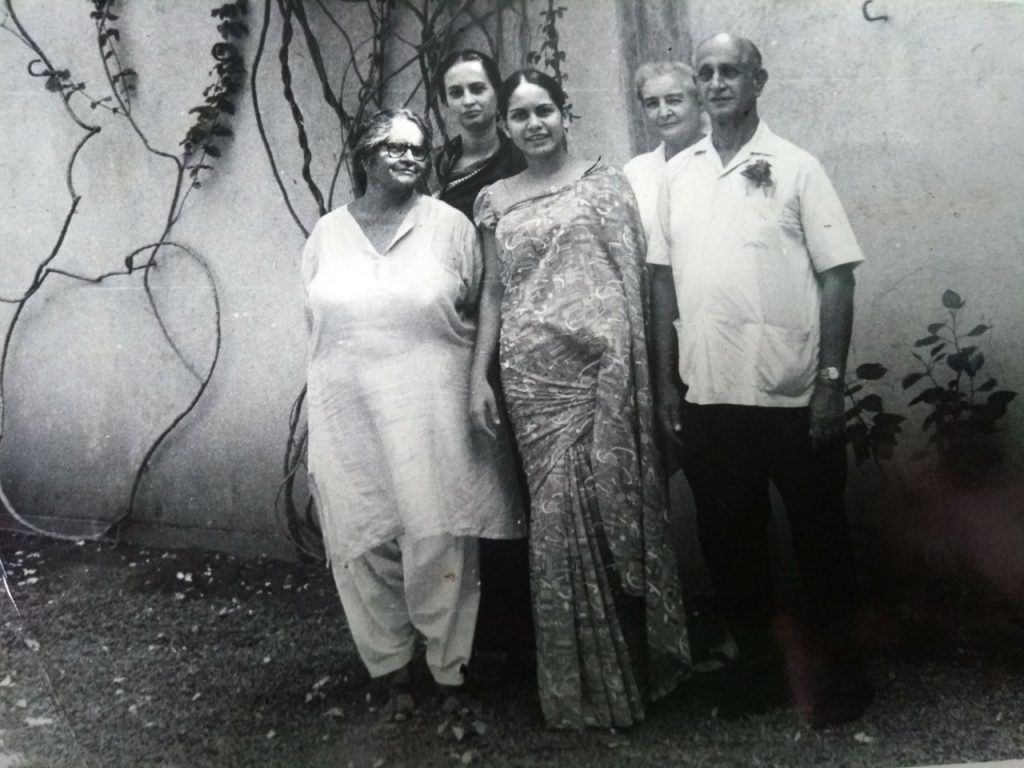
Millie with Udar, Mona and Gauri Pinto.
During those years, Udar’s Harpagon Workshop was still developing and Milly was perhaps the most energetic worker in the establishment. Often she would be found working solo at bucket-making. And more. Wherever there was a call for volunteers for harvesting, construction, concreting, etc., you could be sure of finding Milly there plunged in work. I have so often seen her returning at 11 p.m. or 12 in pouring rain to her room. She was service embodied. And the Mother had a special relation with her. However occupied She might be, the Mother had always time for Milly.
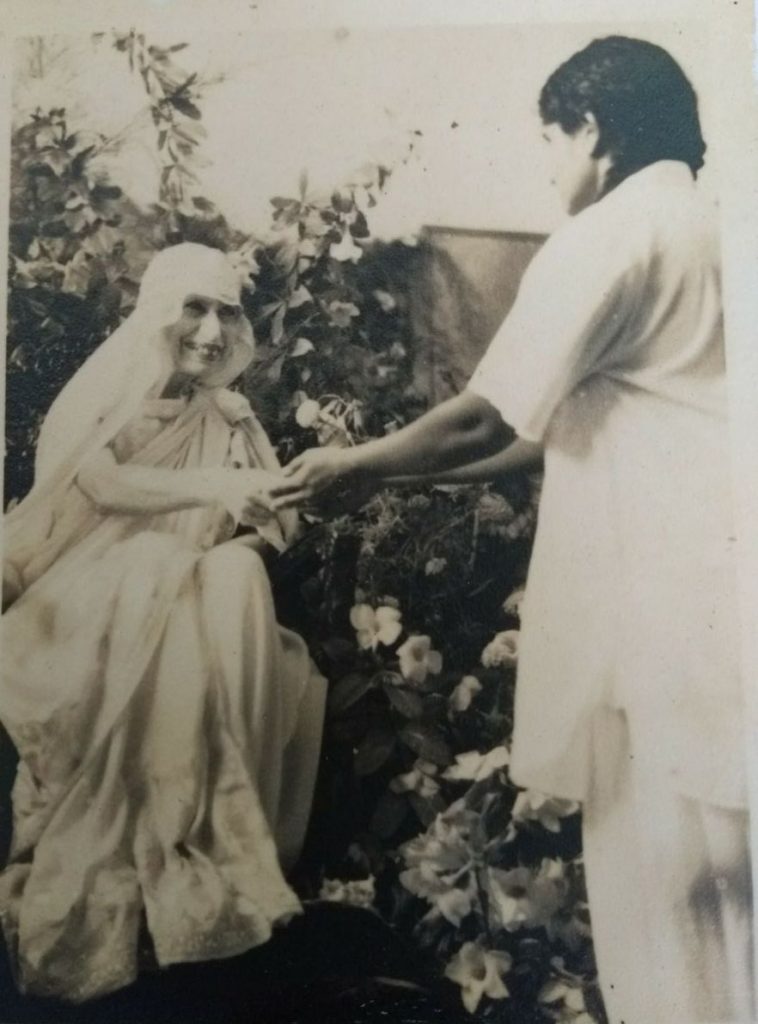
Milly was simple and unassuming to a fault. Few suspected that she had a living yogic side. It was years ago: I was addressing a seminar at the Park Guest House. Milly seemed to have peeped in and left. Later she told me that she did not find me in the hall. I was surprised and said that I was there, speaking to the audience. She smiled and told me: ‘It was Kapali Sastry that was speaking there!’
I was taken aback. For although I was aware that at times my teacher Kapali Sastry was present when I was speaking or writing, to have this concrete corroboration was something totally unexpected.
She belongs to a family that has contributed substantially to the development of the Ashram. Even by herself, she had certain qualities that were singular. Next to her spirit of service was her utter dedication. When her famous aunt, Dr. Albuquerque, left a legacy—all for Milly—Milly offered the whole of it to the Mother. That the Mother arranged things differently is another matter.
Milly always remained the same—humble and simple. May her spirit of service inspire all of us always. May her dedication be an example to us always.
M. P. Pandit
__________________________
(Photographs courtesy : Ms. Gauri Pinto)
Wonderful !
Having met Udar repeatedly in 1974 in New York City, and later on also Mona at Golconde when my wife and I stayed there, I can only now fully appreciate the full meaning of who these people, and their family members, were.
We have had more or less sketchy information about Mona and Udar. We needed a great soul like M.P. Pandit to speak in all simplicity of a much-ignored great soul that was Milly. Her devotion and dedication had at times something in common with the pious sâdhaka Gangadhar: ever identified with the Mother’s consciousness. Thanks, Pandit-ji, for the pinch of wit that was so typical of Milly. A precious gift from Anurag. Looking forward to some more gems of this calibre.
How wonderful to read all the revealing details about these great dedicated lives –
Nothing mattered to them more than to serve ” The Divine Mother ” and the Master – “Udar ” so self – effacing and unassuming – And his love and recitation of ” Savitri ” was just extraordinary – he never asserted himself and never ever tried to become a ” Guru ” which he could have easily become – however , ” Sweet Mother’s ” Grace saved him –
He was always a picture of dignity and always conscious of his obligation as a willing servitor of the Supreme – he was surely one ” Among the Great – so was Mona and dear Milly -always warmly welcoming – pictures of sweetness and delight –
After reading about these precious lives we have to reinvent a new definition of
” Greatness ”
“
Millie di was also a fabulous chef ! Her brother Wilfy, (who was also our Ashram Band Master along with big chief Monsieur Selvanathan) – used to invite me every now and then , to share the delicious mutton curry prepared by her. It used to be finger licking good, but Millie di always took the compliments lightly the next day at the Ashram’s post office where she could be found at her official duties. Many thanks Anurag for this very valuable and moving presentation – a real gift !
Too good posting
So nice of you for your posting.
Thanks Anurag
Anurag thanks for enriching us with all these valuable information
A treasure trove of information.
Overman Foundation is doing great job. Thank you
I was previleged to know all three of them while I studied in the Sri Aurobindo Ashram School and for many years thereafter. I was well aware of Udar’s multifaceted personality and his crucial role in executing The Mother’s plans to perfection.
I also knew of Mona being a perfect host to the numerous guests in Golconde and its superb upkeep by her and her team.
But Millie’s dedication and prodigious capacity for hardwork was a bit of a revelation to me thanks to M.P.Pandit’s account of her.
Udar was my Grandad’s brother.